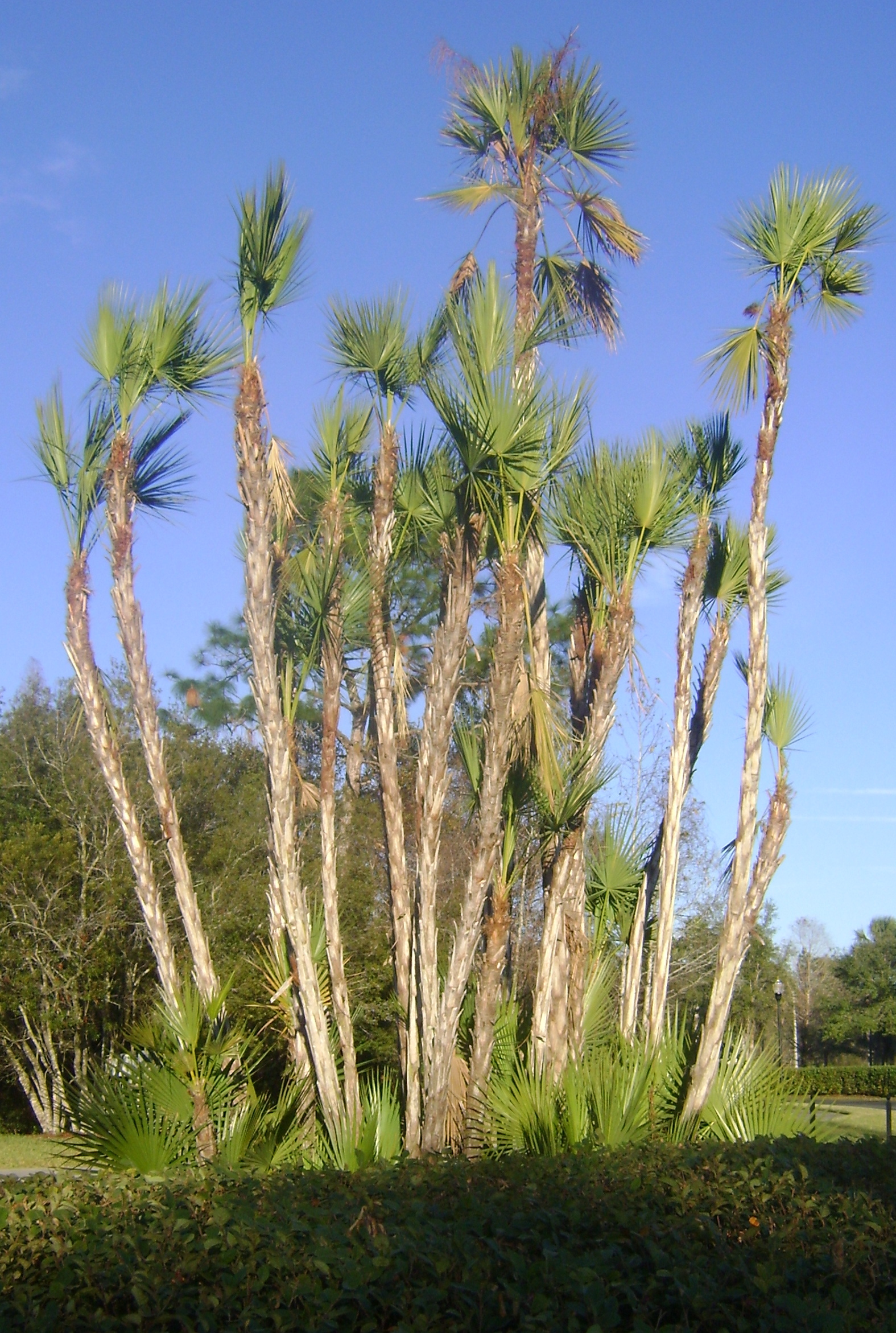This unusually colorful palm is particularly eye-catching at night when illuminated from below with landscape lighting.
The Paurotis palm grows multiple thin brown trunks from a clumping base. Trunks grow at varying rates, giving this palm an asymmetrical, sculptural appearance. The fan-like fronds consist of deeply divided one-inch segments. They grow two to three feet in width and are light green with silver to silver-green undersides. Thin, curved and bright green leaf stems lined with bright orange “teeth” support the fronds. Showy white to yellow flowers grow from bright orange flower stalks that later produce small black fruit. The contrast in coloring can be quite striking.
Also known as an “Everglades” palm, this Florida native is one of the few palm varieties that can tolerate a damp environment. They are suitable for growing around ponds or water features. They tolerate periods of dryness or drought but will grow faster and show brighter color when well irrigated. Salt and wind resistant, the Paurotis prefers full sun. This palm looks best when regularly trimmed to remove excess trunk shoots and dead fronds. If allowed to grow naturally, a row of several Paurotis can also be cultivated into a beautiful and nearly impenetrable green fence.

